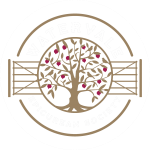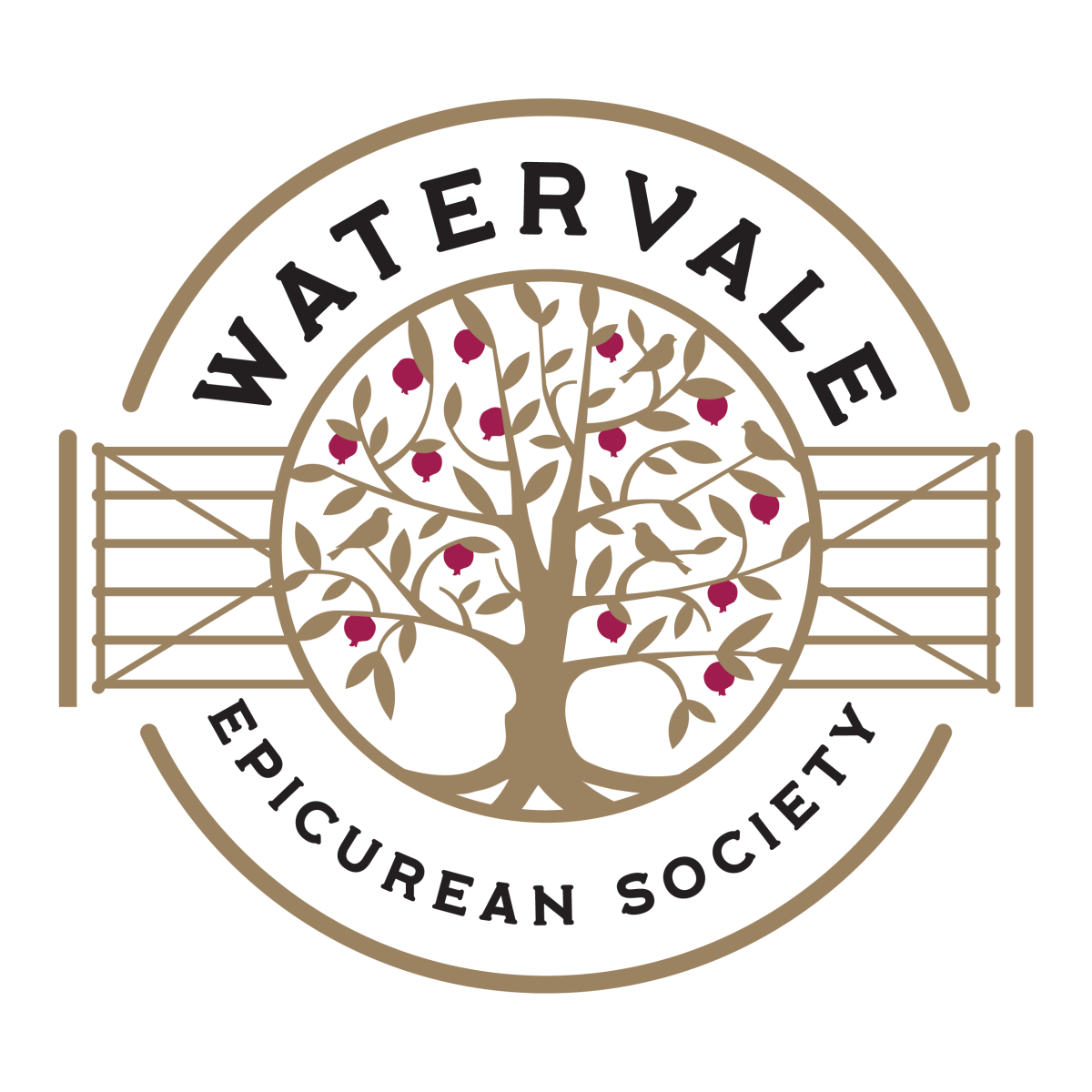The South Australian wine industry started very soon after proclamation in 1836 by the largely Protestant British free settlers and the Lutheran Germans from Silesia and Prussia who immigrated three years later. It did not take the Germans very long to find the Barossa Valley and begin to plant vines.
The first Europeans to settle in the Clare Valley in around 1840 planted vines – John Horrocks at his ‘Hope Farm’, Penwortham, the Hawker Brothers at Bungaree and at Inchiquin by Clare founder Edmund Gleeson.
Austrian Jesuit priests who came to Sevenhill to build a Monastery planted vineyards using cuttings from Bungaree and in 1852 built the first winery in the region to make sacramental wine. Construction of St Aloysius’ Church started in 1864 and was substantially completed in 1875. The Catholic influence had a major impact on the cultural diversity of the Clare Valley and its wine industry. Catholic Polish and Irish were also drawn to Clare partly through this influence – hence the Polish Hill River region, and the village of Armagh to the north west.
Soon after the Jesuits started making wine at Sevenhill, grapes were planted in Watervale, by Rosenburg Cellars, and by Cornishman Francis Treloar who founded Springvale in 1853. In 1862 Springvale was acquired by Sir Walter Hughes who made his fortune in Copper and a home in the Skillogalee Valley. In the 1860’s Carl Sobels was appointed winemaker, bought the property with his brother in law Hermann Buring and renamed it Quelltaler. The Geisenheim clone Riesling was planted in Watervale.
The mining in Burra, Kapunda and the Copper Coasts had a huge impact on the Clare Valley which became a residence for Cornish and Irish mining families, and an important staging posts for bullocks and later trains. Many of these families, or their homes became part of the wine fabric of the Clare Valley.
Vines were planted further south, notably the Attunga vineyard in 1865, with Shiraz vines planted in this year acknowledged by producing the ‘best shiraz in the world’ 150 years later by Decanter in London.
The 1890’s saw a wine boom in Australia. AP Birks established Wendouree wines just north of Sevenhill in 1893. The winery has become an icon and has hardly changed its operational practices in 120 years.
In 1894 John Christison and JH Knappstein founded the Stanley Wine Company in Clare on the site which is now Mr Mick’s named after his son Mick Knappstein. Knappstein took control in 1912.
The nearby Clarevale Cooperative is famous for producing the first Clare resident to graduate as a winemaker – Jim Barry in 1947. He created not only a great wine brand, but also a lineage of winemaker children and grandchildren – Jim Barry Wines, Mad Bastard, Reg and Co, Good Catholic Girl, and Clos Clare.
For much of the mid 1900’s Australian wineries made their reputations and fortunes exporting to the UK. Fortified wines were a major part of these exports as was ‘claret’ from Shiraz and ‘hock’ made from Riesling. Growth over the second world war period which cut the UK off from Europe led to expansion such as the Stanley Wine Company’s development of Leasingham south of Watervale.
For over a century the Clare Valley’s were known for fruit as much as grapes. The site of the current Crabtree vineyard was Pomona Orchards, and the Skillogalee Valley was a fruit bowl. Peter Mitchell moved to the Skillogalee Valley to farm in 1949. His offspring developed Mitchells wines and Kilikanoon next door.
Bill Taylor was a Hotelier in Sydney who bought wine from the Clarevale Co-operative, and developed a relationship with Jim Barry. This interest in wine saw the Taylor Family invest in the Clare Valley near Auburn in 1969, and in the ensuing five decades, three generations have built Taylor’s wines into the biggest wine operation in Clare. They have assisted to put the Clare Valley on the world map with ‘The Visionary’ 2014 Cabernet Sauvignon awarded the best Cabernet in the world.
The 1970’s saw rapid expansion of vineyards, and interest from foreign corporate investors. Heinz acquired Stanley Wine Company and Remy Martin acquired Quelltaler. International investment was short-lived. Heinz sold to Hardy’s, and Remy sold Quelltaler to Wolf Blass which later merged with Mildara, then acquired by Fosters, and became Treasury when merged with Southcorp. Corporatisation led to Clare Valley grapes being processed elsewhere and sold under brands not associated with the region including Penfolds.
The Clare Valley have been pioneers in the ‘epicurean’ side of wine. In 1985 the Clare Gourmet weekend was the first food and wine festival of its kind, and in 1989 the Palmer family opened the first winery restaurant at Skillogalee.
The 1980’s and 1990’s were also been the time of entrepreneurial master winemakers and viticulturalists who have helped to build the reputation of excellence for the Clare Valley internationally. Jeff Grosset started his business in 1981 and in 1998 was awarded Winemaker of the Year by Gourmet Traveller. Brian Croser, a Clare product, chose Hanlin Hill, Clare for his Petaluma Riesling. In 1985 Pikes established their business which was to put the Polish Hill River region very much on the map. Kevin Mitchell founded Kilikanoon in 1997 and this winery has been awarded Australian Winery of the Year by James Halliday as well as the International Wine and Spirits Competition and Mundus Vini five times. The Kilikanoon Oracle Shiraz has been awarded best shiraz in the world three times. Jim Barry wines under Peter Barry was also awarded Australian Winery of the Year in 2019.
Corporate production was largely closed down in the late 1900’s. Hardy’s parent Constellation sold the Clare winery to Mr Mick’s apprentice Tim Adams who had already built a strong brand in his own right. The Fosters acquisition of the Quelltaler winer also saw that facility close, but not before Skillogalee and subsequently David O’Leary and Nick Walker leased the site to produce wine. With the closure of Quelltaler, Skillogalee and O’Leary Walker built their own wineries, the latter in Leasingham. This winery has also provided services assisting other fine winemakers and brands to emerge, Shut the Gate a very successful example.
The late 1990’s also saw the development of 600 acres of vineyard on the Farrell Flat Road and the building of the Kirrihill facility. This was led by Sean Edwards, later a Federal Senator with a family history in Clare to the 1860’s. As a side note it was Nancy Edwards that married Jim Barry, further expanding this family’s influence in the region.
With departure of most corporate investors in more recent years the Clare Valley has become dominated by family wine companies. As well as Barry’s, Pikes, Taylors, Mitchells we have seen emergence of family names such as Paulett, Eldridge, and Jeanerret as winemakers chose to back themselves in Clare. This trend has continued with the likes of Sussex Squire, Matriarch and Rogue, Kerrie Thompson and many others.
The Clare Valley wine industry’s uncompromising commitment to quality drove unprecedented industry collaboration to be come the first region to choose a screw cap for all of its Rieslings in 2000. By acting as a region the world took notice.
In recent years there has been a movement towards organic vineyards, wild yeast, picking earlier, fermenting whole bunch or on skins and other ‘natural’ practices. The new wave of winemakers include Colin McBryde of Adelina, KT, Vanguardist Michael Corbett, Marnie Roberts of Matriarch and Rogue, and the 2019 Young Guns of Australian Wine Damon and Jono Koerner.
I have been asked if there is tension between the old and new school of winemaking. In my view the new wave respect the legacy of the forebears from whom they have learned. The new wave is actually a return to old methods, but with the benefit of technical wisdom derived from wine-making science. The old guard are enjoying the challenge – in the most part.
The Clare Valley viticultural landscape is among the most diverse in the world, but so is its cultural and breadth of business models. It is a rich tapestry of families, values and investments brought together by one key fact. The Clare Valley over-delivers.
I do not believe there is another region in Australia that has had the international acclaim for quality earned by the Clare Valley. Certainly when we consider the accolades received for the size of our region it is undeniable that the Clare Valley punches above its weight.
We may be best known for our Riesling, but we have still been able to produce Shiraz and Cabernet Sauvignon rated best in the world. Not bad!









Need a book on Clare wine history